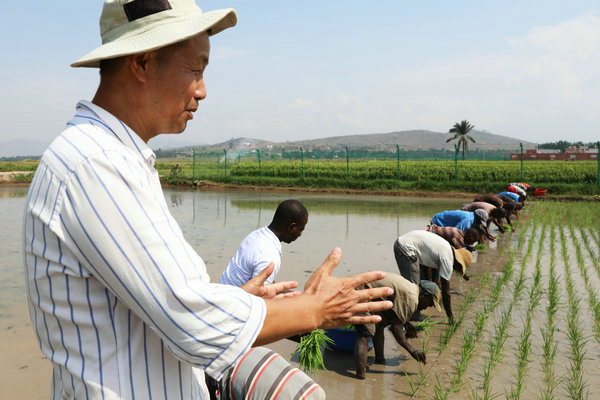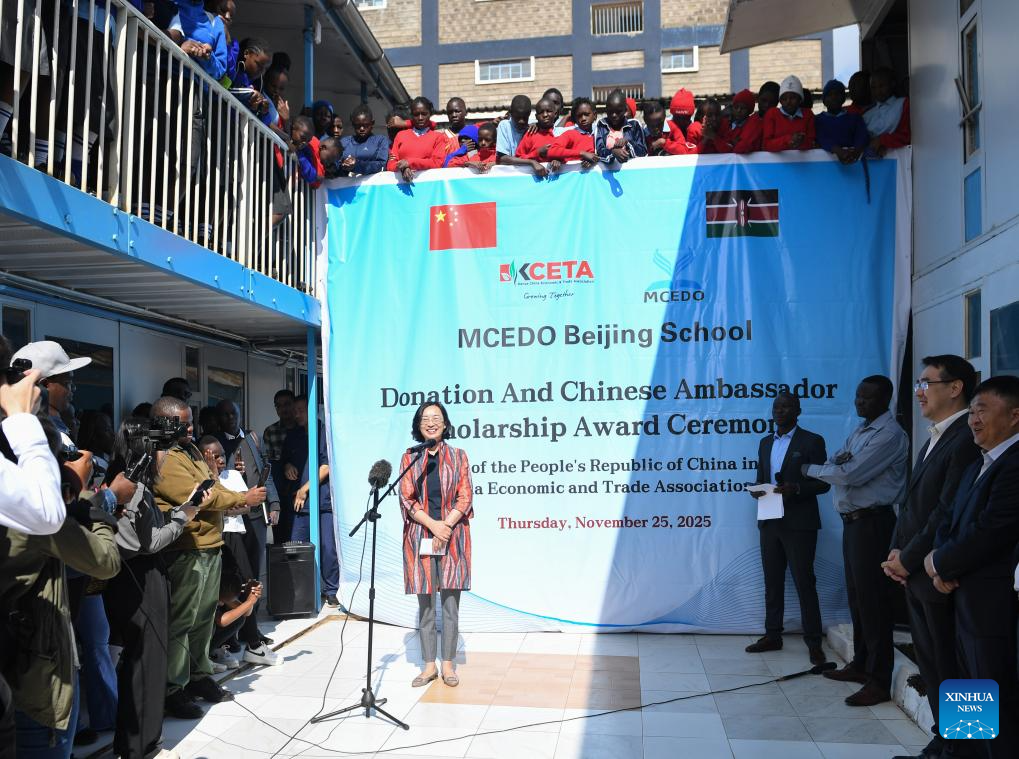Agriculture expert Jiang Daiming instructs farmers how to plant rice in the Commune of Gihanga in Burundi’s northwestern Bubanza province. [Photo/Xinhua]
By Gerald Mbanda
Africa possesses immense agricultural potential, with nearly 60 percent of the world’s uncultivated arable land. Yet despite this abundance, many African countries still depend heavily on food imports. Recurring droughts, limited access to modern farming technologies, and insufficient investment in agricultural infrastructure have contributed to persistent food shortages. In several regions, famine becomes especially severe during dry seasons when crop yields decline. However, strengthened agricultural partnerships—particularly between Africa and China—are gradually transforming this situation by enhancing productivity, resilience, and sustainability.
China has become a key ally in Africa’s pursuit of food security through targeted support programs that promote technology transfer, training, and infrastructure development. A major component of this cooperation is the establishment of agricultural demonstration centres across the continent. These centres act as training grounds where farmers receive practical instruction in improved crop management, irrigation, soil fertility techniques, and mechanization. By equipping farmers with modern skills, China is helping African nations improve yields and adapt to changing climate conditions.
One significant area of impact is the introduction of high-yield hybrid rice varieties. Rice is a critical staple in many African households, but domestic production has historically lagged behind demand. Chinese hybrid rice, known for its strong resistance to pests and higher productivity, has been successfully introduced in countries such as Nigeria, Madagascar, Sierra Leone, and Ethiopia. In many of these regions, farmers have reported yield increases of 30 to 50 percent after adopting the improved varieties. This has contributed to stronger food availability, increased household income, and reduced dependence on imports.
Beyond rice production, China has also helped boost yields of other essential crops like maize, vegetables, and legumes. Demonstration farms have emphasized sustainable practices such as the use of organic fertilizers, integrated pest management, and crop rotation. These eco-friendly methods help restore soil fertility, protect biodiversity, and reduce reliance on chemical inputs, resulting in long-term improvements in agricultural productivity.
A particularly notable contribution is the introduction of Juncao technology, an innovative Chinese agricultural method that uses a special type of grass as a substrate for growing mushrooms. This technology has proven transformative in countries such as Rwanda, Uganda, Lesotho, and South Africa. In Rwanda, in particular, Juncao has empowered smallholder farmers—especially women and youth—to cultivate mushrooms at low cost, creating new avenues for both nutrition and income. Because Juncao does not require large plots of land, it is ideal for densely populated or land-scarce regions. Mushrooms grown using this method provide protein-rich food, improve household nutrition, and can be sold in local markets, offering a reliable income source. Additionally, leftover Juncao biomass can be used for livestock feed and soil enrichment, creating a sustainable circular agricultural system.
Infrastructure development remains a key element of China’s support. Investments in irrigation systems, storage facilities, rural roads, and agricultural machinery have helped reduce post-harvest losses and enable farmers to transport their produce more efficiently. In drought-prone areas, Chinese-supported irrigation projects and water-efficient technologies have allowed farmers to continue producing food even during dry spells, mitigating the risk of famine.
The cumulative impact of these initiatives is becoming evident across many African countries. Improved crop yields, better farming practices, and diversified agricultural livelihoods are strengthening food security and enhancing rural living standards. While challenges such as climate change, financing gaps, and logistical constraints still exist, the progress made illustrates the value of sustained international cooperation.
Moving forward, expanding training programs, increasing access to technology, and scaling successful pilot projects—such as hybrid rice cultivation and Juncao mushroom farming—will be crucial. Supporting smallholder farmers, who make up the majority of Africa’s agricultural workforce, must remain central to these efforts.
With its vast arable land, Africa has the potential to become a global agricultural powerhouse. Through continued collaboration with partners like China, the continent is taking meaningful steps toward a future of food self-sufficiency and sustainable agricultural growth.



